Toyota Camry 2002 model year with left- or right-hand drive controls belong to the XV30 generation. The cars were assembled at plants in Japan, the United States and Australia.
Description of the 2002 Toyota Camry
The new generation XV30 received an improved body with programmable deformation zones that increased crash safety. The cars were offered to customers only with a 4-door sedan body.
Vehicles are characterized by improved comfort and expanded options package, not available for the previous generation XV20. An additional advantage was the exhaust system with a neutralizer - this allowed to reduce toxicity to European standard Euro-3.
The vehicle is based on a new platform with a lever-type independent suspension. Increased distance between the axles and a wider track increased stability of the vehicle when moving at high speeds.
The McPherson struts provided a smoother ride on unpaved roads. The softness of the chassis did not allow for any sharp maneuvers and increased the risk of body roll on transverse waves of the road surface.
Exterior
2002 sedans got a massive front bumper and elongated headlights with integrated turn signals. Protruding edges of wheel arches were joined by a belt line, and protective rubber pads on the doors were retained.
Thanks to the streamlined shape, the drag coefficient has been reduced and there is much less noise when driving at high speeds. The aft lighting system with increased dimensions improved the visibility of the lights at night.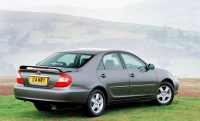 Advantages
Advantages
The advantages of the Camry generation XV30:
spacious interior;
a wide luggage compartment with the ability to increase the useful volume by folding the backrest of the rear sofa;
good protection against noise;
high durability of trim materials;
good visibility from the driver's seat;
the soft chassis, not transmitting vibrations from minor irregularities in the road.
Technical Specifications
Camry sedans were offered in 2002 in seven colors (white paint was not available in the production program). The base model with 2.4-liter power unit was equipped with a gearbox with 5 forward speeds and manual shifting.
Most trucks used a hydraulic 4-speed transmission, which was highly reliable.
Front wheel drive was standard in overseas markets, but in Japan the Four with 4x4 transmission (with viscous clutch in rear wheel drive) became popular.
Main parameters
Technical specifications:
curb weight - from 1470 to 1550 kg;
Allowed gross weight - from 1935 to 2015 kg;
tank capacity - 70 liters.
Engine
The following engines were used on these trucks:
base 2AZ-FE, which had a four-cylinder in-line block of 2.4 liters and 16-valve head with VVT-i variable mixture intake and exhaust system;
Improved 1MZ-FE with 3.0-liter V-type six cylinders and separate 12-valve heads for each block.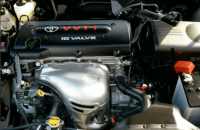 Car dimensions
Car dimensions
Dimensions of the car Camry assembly of 2002:
body length - 4805 mm;
width - 1795 mm (without rear-view mirrors);
height - 1470 or 1480 mm (depending on the type of wheels);
ground clearance - 150 mm;
basis - 2720 mm.
Car design
The design concept of the 2002 Toyota Camry continues to keep up with the times. It reeks of modern originality, which is harmoniously combined with the immutable sophistication, fitting the description of the representatives of the business segment.
The front part of the automobile has remained unique and peculiar only to Camry. Cast bumpers, grille with chrome, and non-standard shape of headlights formed individual recognizable style for the car. The rear part also differs with originality. Unusually large, but harmoniously merging with the body rear lights, combined with the overall mass of the rear bumper - all this together has created a unique sedan, for which it has become loved by millions of car owners.
The 2002 Toyota Camry is all right with aerodynamics. This is evidenced by its appearance. Air resistance coefficient of 0.28 indicates excellent acceleration and fuel consumption.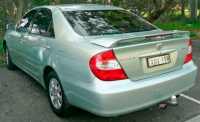 Car Package
Car Package
The 2002 model year cars were offered in several versions (LE, SE and XLE). A set of options depended on the original market, the cars for Japan were distinguished by improved equipment.
For example, the factory installed a rectangular sunroof with electric drive, the more expensive models offered a navigation system with color display and voice informer.
Devices that increase comfort
Standard equipment included:
hydraulic power steering;
trip computer with display in instrument cluster;
four loudspeakers (rear speakers were on a shelf under the window);
column with manual pitch and angle adjustment;
electric side window drives, lockable by driver;
electric heated and adjustable rear-view mirrors;
heating and air conditioning system with automatic regulation;
2 Din stereo with tuner, 4-channel amplifier and CD player;
electric heated front seats with separate adjustment;
rain and light sensors (for automatic control of wipers and parking lights);
rear seat backrest with folding mechanism.
The base configuration had cloth interior trim and door linings, and the front seats were manually adjustable. When ordering leather trim, the driver's and passenger's seats could be electrically operated. Regardless of equipment level, the center tunnel and door panels were equipped with imitation wood veneer trim.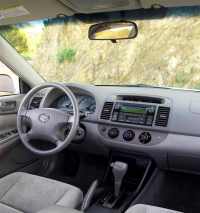 For security
For security
A basic set of safety systems included:
Power bars in the doors that dampen some of the impact energy and increase stiffness;
spars with programmable deformation;
inertial seat belts (in front with pyrotechnic tensioners);
Injury-proof front head restraints;
4 airbags (front and side airbags in backrests)
electronic immobilizer with ID in the key head;
ABS unit with electronic brake force regulator and pressure booster system in case of emergency deceleration;
central locking with the possibility of locking the doors from the driver's seat;
safety switches in rear doors (for protection against accidental unlocking while children are in motion);
head fog lights;
stern fog light and an auxiliary deceleration signal under the rear window.
Disc brakes were used on all models. The 3-liter version was offered with a trajectory control system, integrated in the ABS unit.
At the same time a controller was installed to prevent the drive wheels from spinning. The driver could forcibly turn off the system by pressing a button.
Other equipment
The cars had front and rear mudguards by default, and a full-size spare tire was stored under the decorative floor of the luggage compartment.
The kit included a jack and wrench for removing and installing the disc from the hub.
The inside of the hood had a screen of elastic material to reduce noise. Toyota dealers installed mechanical or electronic anti-theft systems at the customer's request.
Running Features
During the operation of cars with mileage over 300,000 km, the driver will encounter failures of the main units of the power plant and chassis.
The interior trim will require attention, and the body may have surface and end-to-end corrosion. For repair, you can use spare parts from alternative manufacturers or purchase components from wrecked cars.
Running gear
The engines of the fifth-generation cars began to be equipped with an extremely innovative VVT-i technology at that time. The essence of this mechanism was the variable valve timing system, which was installed in the engines of cars up to the copies of the 2005 Toyota Camry. The system adjusted the engine's performance to the driver's driving style and gave maximum efficiency.
Top version of the 2005 Toyota Camry had a V-6 3.5-liter engine, which at 5.3 thousand rpm gave 186 "horses". At the same time the car gained a hundred in nine seconds. "Japanese" was equipped with a new for that time "automatic" Super ECT, which provided a fast and smooth shifting due to electronic control.
Another power unit option - 2.4 liters. It was equipped with a panoramic "mechanics" or the same "automatic" Super UST. With this engine at 5.6 thousand rpm the car developed 152 hp.
What problems can be encountered
Common car malfunctions:
squeaking brakes and premature wear of mechanism parts due to jammed guides;
damage to the threads of the timing gear cover studs due to improper tightening torque;
squeaks in the suspension while running indicate the destruction of the joints of the levers;
crunching at rotation of a steering wheel with boring occurs due to wear of a shaft cross;
jerks at rpm under load are caused by breakage of air flow sensor;
illumination of the Check Engine indicator and occurrence of error P1135 signal failure of the heated oxygen concentration sensor;
poor illumination of the roadway due to improper adjustment;
increased oil consumption with the appearance of a smoky exhaust due to wear of the piston group or oil scraper caps;
unpleasant smell in the passenger compartment when the air conditioner is on because of contaminated evaporator;
jerky shifting occurs due to insufficient oil level or friction clutch wear;
vibration of the body while the engine is running indicates the failure of the supports;
bad starting of warmed up engine is connected with clogged or flowing injectors (simultaneously the Check Engine indicator turns on);
crunching or clicking in the turn indicates breakage of the constant velocity joint.
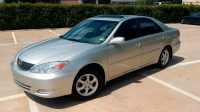
-4.png)